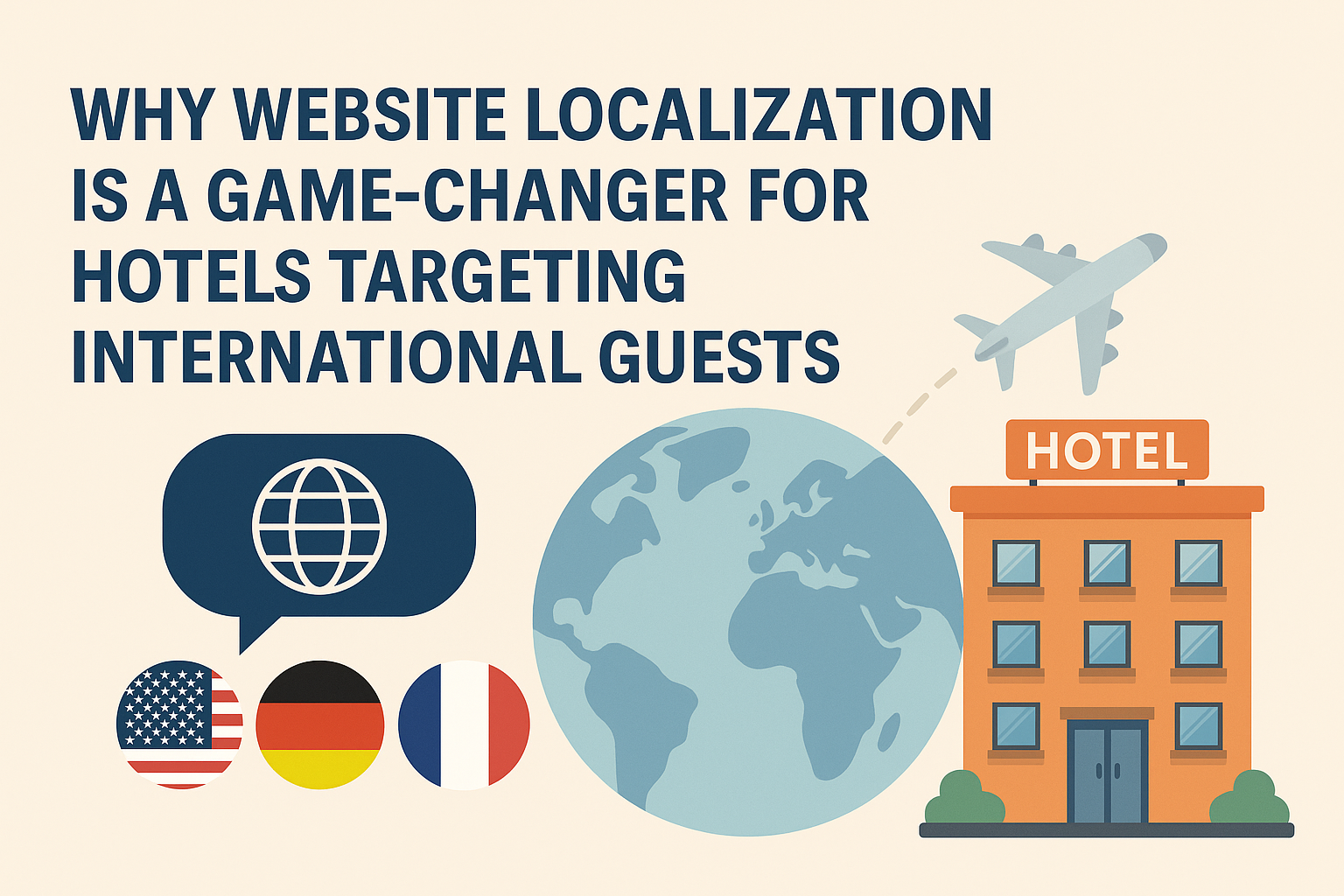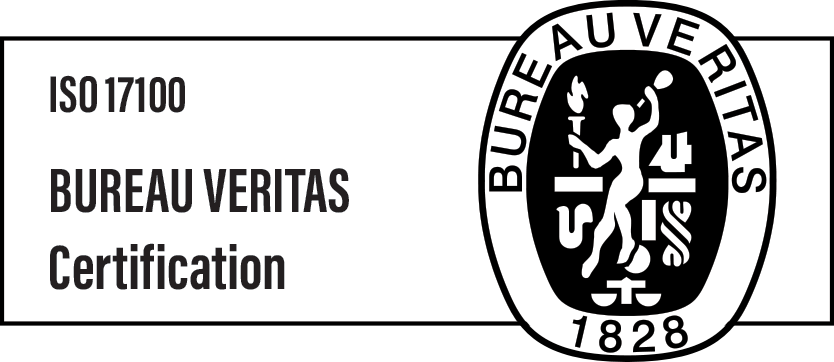Why website localization is a game-changer for hotels targeting international guests

Local guests feel at home. So should international ones.
Most hospitality brands spend time and budget perfecting their on-site guest experience. From the check-in desk to the pillow menu, every detail is considered. But for international travelers, the guest experience starts earlier—on your website.
That first touchpoint matters. If your website loads in a language they don’t speak, or if the navigation feels confusing, your potential guest won’t stick around. They won’t see your premium rooms or read your glowing reviews. They’ll simply leave, not because your offering isn’t right, but because the online journey wasn’t.
This is where localization comes in. Localization means more than just translating text. It involves adjusting your website’s content, design, booking flow, and user experience to feel natural and intuitive for each audience. A well-localized site removes friction, builds trust, and makes booking feel easy.
And ease is powerful. Guests who find your site simple to use are more likely to stay on it, engage with your content, and complete a reservation. That’s why website localization has become a critical growth tool for hotels expanding internationally.
This article explores how localization transforms user experience, improves conversions, and helps you compete with OTAs and global brands. For hotels targeting international guests, a localized website isn’t a bonus feature—it’s a business essential.
1. Better UX starts with native-language browsing
When a guest lands on your website in their own language, the experience instantly feels more familiar. They can read clearly, navigate comfortably, and understand every step of the booking process. This lowers anxiety and increases the chance that they’ll stick around long enough to make a reservation.
Language isn’t the only factor in user experience, though. Date formats, currency symbols, form fields, and even layout preferences can vary by region. For example, guests from the US expect month/day/year date formats, while those from Europe expect day/month/year. If the booking calendar doesn’t make sense at a glance, trust breaks down quickly.
Localization solves this. It adapts not just the language, but the structure and formatting of your website for each target market. Navigation menus, buttons, hotel policies, and even footers get reshaped for clarity and comfort.
The result is a site that feels easy. Guests know where to click. They don’t need to stop and figure things out. And the more intuitive the experience, the more likely they are to complete the journey from browsing to booking.
Language Service Providers (LSPs) with UX expertise can guide you through these changes. They don’t just translate—they help reshape the user flow so it works for real people in every market.

Better UX starts with native-language browsing
2. Localized CTAs and messaging improve conversion rates
A good call to action (CTA) doesn’t just tell guests what to do. It motivates them to take the next step. But when that CTA is translated word for word—without adapting tone, urgency, or cultural nuance—it often falls flat.
Let’s say your English site says “Book now.” That might work in North America or the UK, but it can feel too direct in Japan or too bland in Brazil. Localization takes into account how different cultures respond to persuasion. Some markets prefer a softer approach, others expect more energy. The same principle applies to headlines, descriptions, and promotions.
Beyond tone, the message itself needs to match what local travelers care about. A guest in Germany might prioritize cancellation policies and sustainability. A guest in Mexico might value flexibility or included breakfast. Simply copying the English version across all markets ignores those priorities.
Localization gives you the opportunity to rethink what you’re saying—and how you’re saying it—for each audience. CTAs, selling points, and even supporting copy are adapted to speak directly to what matters most in each market.
An LSP with marketing and transcreation expertise helps you find that balance. They work with your brand voice while shaping messages that resonate locally.
When your content feels relevant and motivating, conversion rates rise. It’s not just about understanding the message—it’s about believing in it.

Localized CTAs and messaging improve conversion rates
3. SEO localization helps international guests find you first
Even the most beautiful website won’t deliver bookings if no one finds it. That’s why localization must include more than visible content—it must also support search engine optimization (SEO) in each target language and market.
Many hotels translate their websites but overlook the technical side of localization. This includes translated URLs, meta descriptions, image alt text, and page titles that match local search behavior. Without these elements, your pages are unlikely to rank in search engines like Google, Yandex, or Naver.
Moreover, direct translations often miss the mark when it comes to keywords. The terms travelers use to search for accommodation vary between regions and cultures. For instance, an English-speaking user might search “family-friendly resort near Rome,” while an Italian speaker could use “hotel per famiglie vicino Roma.” If you don’t optimize for both, your Italian pages won’t show up—even if they exist.
True SEO localization involves researching local keywords, integrating them naturally into content, and setting up proper hreflang tags so search engines serve the right language to the right user. When done correctly, it puts your hotel in front of the right people—before they ever visit an OTA.
This process isn’t just technical—it’s strategic. A skilled LSP with experience in SEO localization can ensure that your multilingual website isn’t just translated, but also searchable, visible, and competitive in every region you serve.

SEO localization helps international guests find you first
4. Trust grows when guests feel spoken to—not just translated for
Trust is the foundation of any booking decision. When your website feels like it was written just for the guest—not awkwardly translated—they’re more likely to believe in your service, your promises, and your value.
Unfortunately, many hotel websites fall short. Machine translations, inconsistent tone, or mismatched phrasing create a sense of detachment. Even if the words are technically correct, the emotional disconnect is clear. And for international guests making a financial decision from far away, that disconnect is enough to drive them elsewhere.
Localization bridges that gap. It ensures your tone feels human, your copy flows naturally, and your brand personality shines through in every language. This applies not only to marketing copy, but to practical elements like booking confirmations, refund policies, and FAQ answers. These are the details that shape trust.
Guests also appreciate when content reflects their culture. Local payment options, relevant imagery, and regionally appropriate examples show respect and care. These small touches can make a global brand feel local—and that’s where trust begins.
With the support of a Language Service Provider who understands tone and culture, you can go beyond correctness and speak with confidence. And when your website speaks like a host, your guests will listen—and book.

Trust grows when guests feel spoken to—not just translated for
Your global guests expect a local experience online
For international guests, your website is more than an information hub—it’s your brand’s first chance to welcome them. If the language is right, the message relevant, and the path to booking smooth, they’re far more likely to stay, return, and recommend.
Website localization does more than translate words. It improves user experience, strengthens your search visibility, and boosts conversions by making your message resonate in every language and culture. It also shows that your hotel understands the needs of international guests and values their trust.
A strong Language Service Provider helps you make this shift. From UX to copy, from CTAs to SEO, they guide you in turning a single-language website into a global booking engine.
When done well, localization isn’t a backend task. It’s a front-facing advantage. And for hotels seeking growth across borders, it may be the smartest investment you make.

